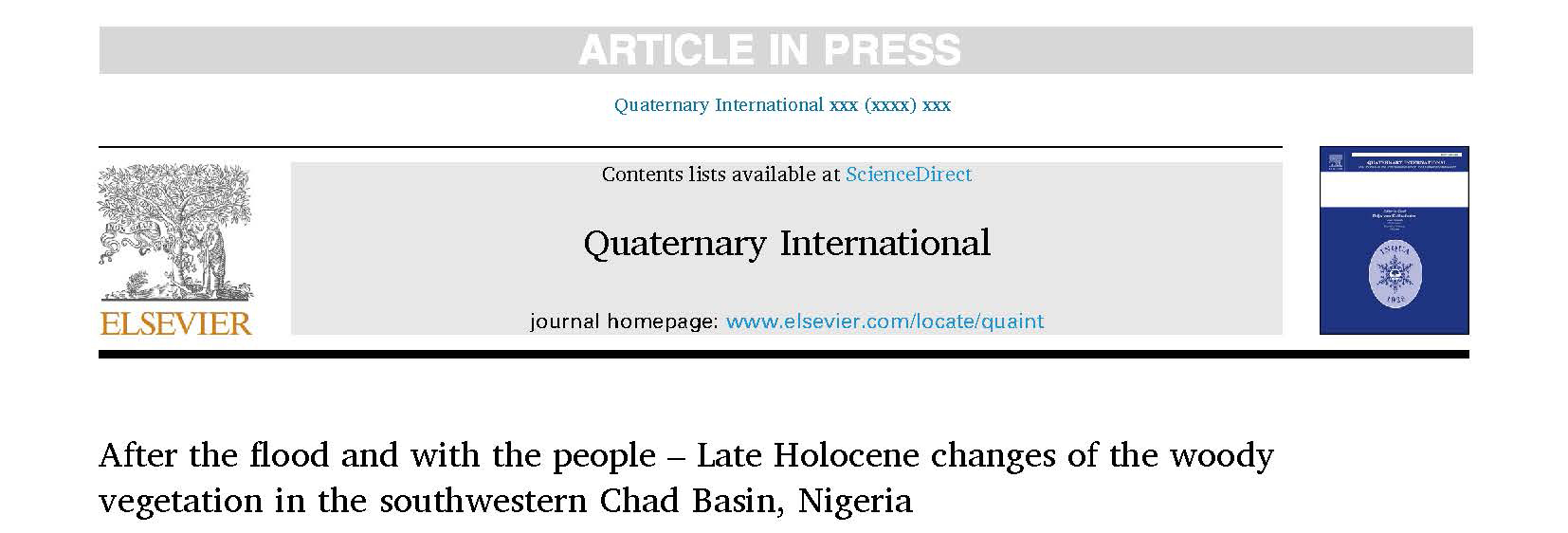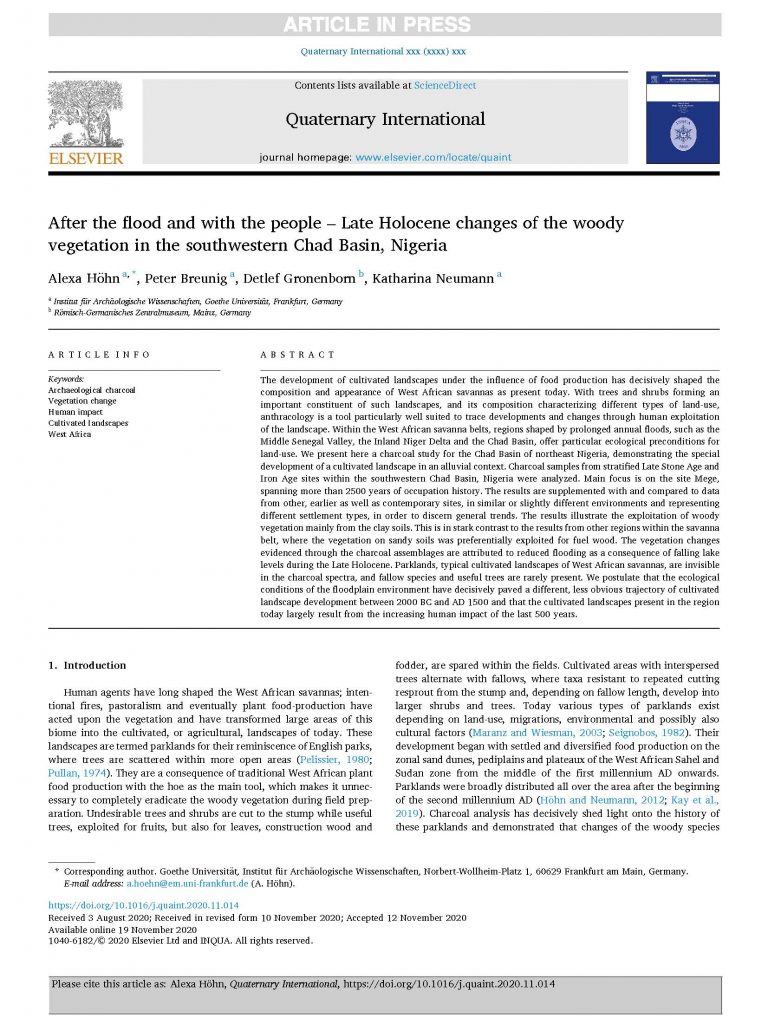A. Höhn et al., After the flood and with the people – Late Holocene changes of the woody vegetation in the southwestern Chad Basin, Nigeria, in: Quarternary International, 2020, in press. DOI: https://doi.org/10.1016/j.quaint.2020.11.014.
Access
Abstract (source: ScienceDirect):
The development of cultivated landscapes under the influence of food production has decisively shaped the composition and appearance of West African savannas as present today. With trees and shrubs forming an important constituent of such landscapes, and its composition characterizing different types of land-use, anthracology is a tool particularly well suited to trace developments and changes through human exploitation of the landscape. Within the West African savanna belts, regions shaped by prolonged annual floods, such as the Middle Senegal Valley, the Inland Niger Delta and the Chad Basin, offer particular ecological preconditions for land-use. We present here a charcoal study for the Chad Basin of northeast Nigeria, demonstrating the special development of a cultivated landscape in an alluvial context. Charcoal samples from stratified Late Stone Age and Iron Age sites within the southwestern Chad Basin, Nigeria were analyzed. Main focus is on the site Mege, spanning more than 2500 years of occupation history. The results are supplemented with and compared to data from other, earlier as well as contemporary sites, in similar or slightly different environments and representing different settlement types, in order to discern general trends. The results illustrate the exploitation of woody vegetation mainly from the clay soils. This is in stark contrast to the results from other regions within the savanna belt, where the vegetation on sandy soils was preferentially exploited for fuel wood. The vegetation changes evidenced through the charcoal assemblages are attributed to reduced flooding as a consequence of falling lake levels during the Late Holocene. Parklands, typical cultivated landscapes of West African savannas, are invisible in the charcoal spectra, and fallow species and useful trees are rarely present. We postulate that the ecological conditions of the floodplain environment have decisively paved a different, less obvious trajectory of cultivated landscape development between 2000 BC and AD 1500 and that the cultivated landscapes present in the region today largely result from the increasing human impact of the last 500 years.





